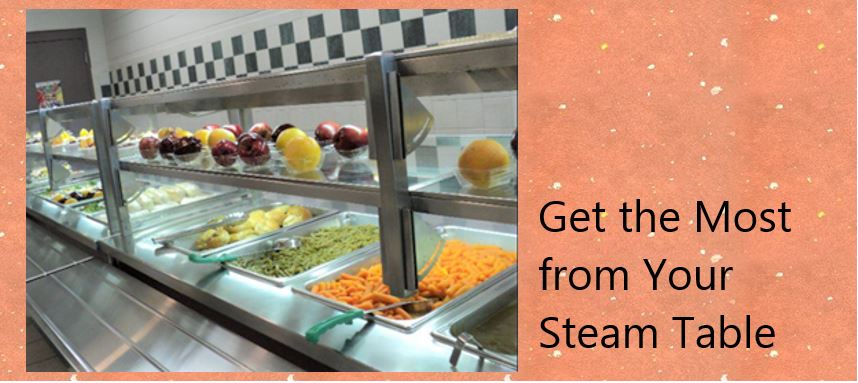What is a Steam Table used for?
One of the many challenges that the foodservice industry faces is finding the balance between keeping prepared food at a temperature that is warm enough to serve your customer a delicious hot meal, but not so hot that you are serving an overcooked, not-so-delicious, plate of food. Steam tables are one of the most effective foodservice equipment solutions to this challenge. A commercial steam table uses steam to hold food for extended periods of time at a temperature that is food safe yet does not cook the food. The wells of a steam table are partially filled with water which is heated to a produce steam. Food pans are placed in the wells and evenly heated by the surrounding steam. With steamtables, there are no hotspots or heat spikes to burn food, only a consistent, soft heat, making them ideal for holding prepared foods.
Follow these guidelines to get the most from your steam table:
1. Always read and follow the operation manual provided by the manufacturer. While most steamtables follow the same principles of operation, there may be specific and important variations between brands.
2. A steam table is specifically made for holding prepared foods at a consistent temperature over time and it cannot be used to cook foods.
3. The amount of time you will be using a steam table will determine the amount of water that you need to be using, but as a rule of thumb, you should not add more than 1-¼" of water in a steam well. Exceeding this amount will not allow the heating elements to effectively function and heat the water to the necessary temperature to produce and maintain steam creating the risk of cold food or food held at unsafe food temperatures.
4. Do not operate your steam table without water unless it is specifically designed to function as a dry well. Operating your steam table without water in the reservoir causes food pans to be subject to the uneven heat given off from the exposed heating elements and may cause hot spots and burns.
5. You should always bring the steam table to the appropriate holding temperature before adding food pans. Water absorbs a great deal of heat and your steam table requires what is know as run-up time or the time required to bring your steam table to a safe food holding temperature. Refer to the operating manual to determine how much run-up time is needed to before adding food pans.
6. Frequently check the temperature of product that is being kept warm on the steam table with a precision thermometer to ensure that you are holding everything at food safe temperatures. Additionally, dense or heavy foods may require more heat than your steam table can produce so you may need to keep these products covered with a steam table pan lid. If you need to see or have access to these foods, consider adding a heat lamp to maintain temperature.
Steam Tables are an efficient and effective way to hold prepared foods at safe temperatures for extended amounts of time. Steam provides a gentle, consistent heat that surrounds food pans so you avoid hot spots and over cooking. They are ideal for front of the house applications like buffets or serving lines as well as back of the house applications like holding prepared foods for meal assembly.


















